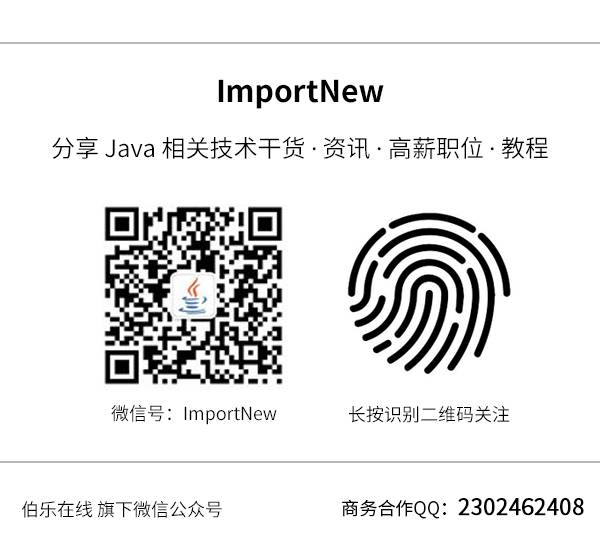(点击上方公众号,可快速关注)
来源:fanjian0423,
fangjian0423.github.io/2014/12/15/mybatis_interceptor/
如有好文章投稿,请点击 → 这里了解详情
MyBatis拦截器介绍
MyBatis提供了一种插件(plugin)的功能,虽然叫做插件,但其实这是拦截器功能。那么拦截器拦截MyBatis中的哪些内容呢?
我们进入官网看一看:
MyBatis 允许你在已映射语句执行过程中的某一点进行拦截调用。默认情况下,MyBatis 允许使用插件来拦截的方法调用包括:
Executor (update, query, flushStatements, commit, rollback, getTransaction, close, isClosed)
ParameterHandler (getParameterObject, setParameters)
ResultSetHandler (handleResultSets, handleOutputParameters)
StatementHandler (prepare, parameterize, batch, update, query)
我们看到了可以拦截Executor接口的部分方法,比如update,query,commit,rollback等方法,还有其他接口的一些方法等。
总体概括为:
拦截执行器的方法
拦截参数的处理
拦截结果集的处理
拦截Sql语法构建的处理
拦截器的使用
拦截器介绍及配置
首先我们看下MyBatis拦截器的接口定义:
public interface Interceptor {
Object intercept(Invocation invocation) throws Throwable;
Object plugin(Object target);
void setProperties(Properties properties);
}
比较简单,只有3个方法。 MyBatis默认没有一个拦截器接口的实现类,开发者们可以实现符合自己需求的拦截器。
下面的MyBatis官网的一个拦截器实例:
@Intercepts({@Signature(
type= Executor.class,
method = "update",
args = {MappedStatement.class,Object.class})})
public class ExamplePlugin implements Interceptor {
public Object intercept(Invocation invocation) throws Throwable {
return invocation.proceed();
}
public Object plugin(Object target) {
return Plugin.wrap(target, this);
}
public void setProperties(Properties properties) {
}
}
全局xml配置:
这个拦截器拦截Executor接口的update方法(其实也就是SqlSession的新增,删除,修改操作),所有执行executor的update方法都会被该拦截器拦截到。
源码分析
下面我们分析一下这段代码背后的源码。
首先从源头->配置文件开始分析:
XMLConfigBuilder解析MyBatis全局配置文件的pluginElement私有方法:
private void pluginElement(XNode parent) throws Exception {
if (parent != null) {
for (XNode child : parent.getChildren()) {
String interceptor = child.getStringAttribute("interceptor");
Properties properties = child.getChildrenAsProperties();
Interceptor interceptorInstance = (Interceptor) resolveClass(interceptor).newInstance();
interceptorInstance.setProperties(properties);
configuration.addInterceptor(interceptorInstance);
}
}
}
具体的解析代码其实比较简单,就不贴了,主要就是通过反射实例化plugin节点中的interceptor属性表示的类。然后调用全局配置类Configuration的addInterceptor方法。
public void addInterceptor(Interceptor interceptor) {
interceptorChain.addInterceptor(interceptor);
}
这个interceptorChain是Configuration的内部属性,类型为InterceptorChain,也就是一个拦截器链,我们来看下它的定义:
public class InterceptorChain {
private final List interceptors = new ArrayList();
public Object pluginAll(Object target) {
for (Interceptor interceptor : interceptors) {
target = interceptor.plugin(target);
}
return target;
}
public void addInterceptor(Interceptor interceptor) {
interceptors.add(interceptor);
}
public List getInterceptors() {
return Collections.unmodifiableList(interceptors);
}
}
现在我们理解了拦截器配置的解析以及拦截器的归属,现在我们回过头看下为何拦截器会拦截这些方法(Executor,ParameterHandler,ResultSetHandler,StatementHandler的部分方法):
public ParameterHandler newParameterHandler(MappedStatement mappedStatement, Object parameterObject, BoundSql boundSql) {
ParameterHandler parameterHandler = mappedStatement.getLang().createParameterHandler(mappedStatement, parameterObject, boundSql);
parameterHandler = (ParameterHandler) interceptorChain.pluginAll(parameterHandler);
return parameterHandler;
}
public ResultSetHandler newResultSetHandler(Executor executor, MappedStatement mappedStatement, RowBounds rowBounds, ParameterHandler parameterHandler,
ResultHandler resultHandler, BoundSql boundSql) {
ResultSetHandler resultSetHandler = new DefaultResultSetHandler(executor, mappedStatement, parameterHandler, resultHandler, boundSql, rowBounds);
resultSetHandler = (ResultSetHandler) interceptorChain.pluginAll(resultSetHandler);
return resultSetHandler;
}
public StatementHandler newStatementHandler(Executor executor, MappedStatement mappedStatement, Object parameterObject, RowBounds rowBounds, ResultHandler resultHandler, BoundSql boundSql) {
StatementHandler statementHandler = new RoutingStatementHandler(executor, mappedStatement, parameterObject, rowBounds, resultHandler, boundSql);
statementHandler = (StatementHandler) interceptorChain.pluginAll(statementHandler);
return statementHandler;
}
public Executor newExecutor(Transaction transaction, ExecutorType executorType, boolean autoCommit) {
executorType = executorType == null ? defaultExecutorType : executorType;
executorType = executorType == null ? ExecutorType.SIMPLE : executorType;
Executor executor;
if (ExecutorType.BATCH == executorType) {
executor = new BatchExecutor(this, transaction);
} else if (ExecutorType.REUSE == executorType) {
executor = new ReuseExecutor(this, transaction);
} else {
executor = new SimpleExecutor(this, transaction);
}
if (cacheEnabled) {
executor = new CachingExecutor(executor, autoCommit);
}
executor = (Executor) interceptorChain.pluginAll(executor);
return executor;
}
以上4个方法都是Configuration的方法。这些方法在MyBatis的一个操作(新增,删除,修改,查询)中都会被执行到,执行的先后顺序是Executor,ParameterHandler,ResultSetHandler,StatementHandler(其中ParameterHandler和ResultSetHandler的创建是在创建StatementHandler[3个可用的实现类CallableStatementHandler,PreparedStatementHandler,SimpleStatementHandler]的时候,其构造函数调用的[这3个实现类的构造函数其实都调用了父类BaseStatementHandler的构造函数])。
这4个方法实例化了对应的对象之后,都会调用interceptorChain的pluginAll方法,InterceptorChain的pluginAll刚才已经介绍过了,就是遍历所有的拦截器,然后调用各个拦截器的plugin方法。注意:拦截器的plugin方法的返回值会直接被赋值给原先的对象
由于可以拦截StatementHandler,这个接口主要处理sql语法的构建,因此比如分页的功能,可以用拦截器实现,只需要在拦截器的plugin方法中处理StatementHandler接口实现类中的sql即可,可使用反射实现。
MyBatis还提供了@Intercepts和@Signature关于拦截器的注解。官网的例子就是使用了这2个注解,还包括了Plugin类的使用:
@Override
public Object plugin(Object target) {
return Plugin.wrap(target, this);
}
下面我们就分析这3个 “新组合” 的源码,首先先看Plugin类的wrap方法:
public static Object wrap(Object target, Interceptor interceptor) {
Map, Set> signatureMap = getSignatureMap(interceptor);
Class> type = target.getClass();
Class>[] interfaces = getAllInterfaces(type, signatureMap);
if (interfaces.length > 0) {
return Proxy.newProxyInstance(
type.getClassLoader(),
interfaces,
new Plugin(target, interceptor, signatureMap));
}
return target;
}
Plugin类实现了InvocationHandler接口,很明显,我们看到这里返回了一个JDK自身提供的动态代理类。我们解剖一下这个方法调用的其他方法:
getSignatureMap方法:
private static Map, Set> getSignatureMap(Interceptor interceptor) {
Intercepts interceptsAnnotation = interceptor.getClass().getAnnotation(Intercepts.class);
if (interceptsAnnotation == null) { // issue #251
throw new PluginException("No @Intercepts annotation was found in interceptor " + interceptor.getClass().getName());
}
Signature[] sigs = interceptsAnnotation.value();
Map, Set> signatureMap = new HashMap, Set>();
for (Signature sig : sigs) {
Set methods = signatureMap.get(sig.type());
if (methods == null) {
methods = new HashSet();
signatureMap.put(sig.type(), methods);
}
try {
Method method = sig.type().getMethod(sig.method(), sig.args());
methods.add(method);
} catch (NoSuchMethodException e) {
throw new PluginException("Could not find method on " + sig.type() + " named " + sig.method() + ". Cause: " + e, e);
}
}
return signatureMap;
}
getSignatureMap方法解释:首先会拿到拦截器这个类的@Interceptors注解,然后拿到这个注解的属性@Signature注解集合,然后遍历这个集合,遍历的时候拿出@Signature注解的type属性(Class类型),然后根据这个type得到带有method属性和args属性的Method。由于@Interceptors注解的@Signature属性是一个属性,所以最终会返回一个以type为key,value为Set的Map。
@Intercepts({@Signature(
type= Executor.class,
method = "update",
args = {MappedStatement.class,Object.class})})
比如这个@Interceptors注解会返回一个key为Executor,value为集合(这个集合只有一个元素,也就是Method实例,这个Method实例就是Executor接口的update方法,且这个方法带有MappedStatement和Object类型的参数)。这个Method实例是根据@Signature的method和args属性得到的。如果args参数跟type类型的method方法对应不上,那么将会抛出异常。
getAllInterfaces方法:
private static Class>[] getAllInterfaces(Class> type, Map, Set> signatureMap) {
Set> interfaces = new HashSet>();
while (type != null) {
for (Class> c : type.getInterfaces()) {
if (signatureMap.containsKey(c)) {
interfaces.add(c);
}
}
type = type.getSuperclass();
}
return interfaces.toArray(new Class>[interfaces.size()]);
}
getAllInterfaces方法解释:根据目标实例target(这个target就是之前所说的MyBatis拦截器可以拦截的类,Executor,ParameterHandler,ResultSetHandler,StatementHandler)和它的父类们,返回signatureMap中含有target实现的接口数组。
所以Plugin这个类的作用就是根据@Interceptors注解,得到这个注解的属性@Signature数组,然后根据每个@Signature注解的type,method,args属性使用反射找到对应的Method。最终根据调用的target对象实现的接口决定是否返回一个代理对象替代原先的target对象。
比如MyBatis官网的例子,当Configuration调用newExecutor方法的时候,由于Executor接口的update(MappedStatement ms, Object parameter)方法被拦截器被截获。因此最终返回的是一个代理类Plugin,而不是Executor。这样调用方法的时候,如果是个代理类,那么会执行:
public Object invoke(Object proxy, Method method, Object[] args) throws Throwable {
try {
Set methods = signatureMap.get(method.getDeclaringClass());
if (methods != null && methods.contains(method)) {
return interceptor.intercept(new Invocation(target, method, args));
}
return method.invoke(target, args);
} catch (Exception e) {
throw ExceptionUtil.unwrapThrowable(e);
}
}
没错,如果找到对应的方法被代理之后,那么会执行Interceptor接口的interceptor方法。
这个Invocation类如下:
public class Invocation {
private Object target;
private Method method;
private Object[] args;
public Invocation(Object target, Method method, Object[] args) {
this.target = target;
this.method = method;
this.args = args;
}
public Object getTarget() {
return target;
}
public Method getMethod() {
return method;
}
public Object[] getArgs() {
return args;
}
public Object proceed() throws InvocationTargetException, IllegalAccessException {
return method.invoke(target, args);
}
}
它的proceed方法也就是调用原先方法(不走代理)。
总结
MyBatis拦截器接口提供的3个方法中,plugin方法用于某些处理器(Handler)的构建过程。interceptor方法用于处理代理类的执行。setProperties方法用于拦截器属性的设置。
其实MyBatis官网提供的使用@Interceptors和@Signature注解以及Plugin类这样处理拦截器的方法,我们不一定要直接这样使用。我们也可以抛弃这3个类,直接在plugin方法内部根据target实例的类型做相应的操作。
总体来说MyBatis拦截器还是很简单的,拦截器本身不需要太多的知识点,但是学习拦截器需要对MyBatis中的各个接口很熟悉,因为拦截器涉及到了各个接口的知识点。
看完本文有收获?请转发分享给更多人
关注「ImportNew」,看技术干货
















